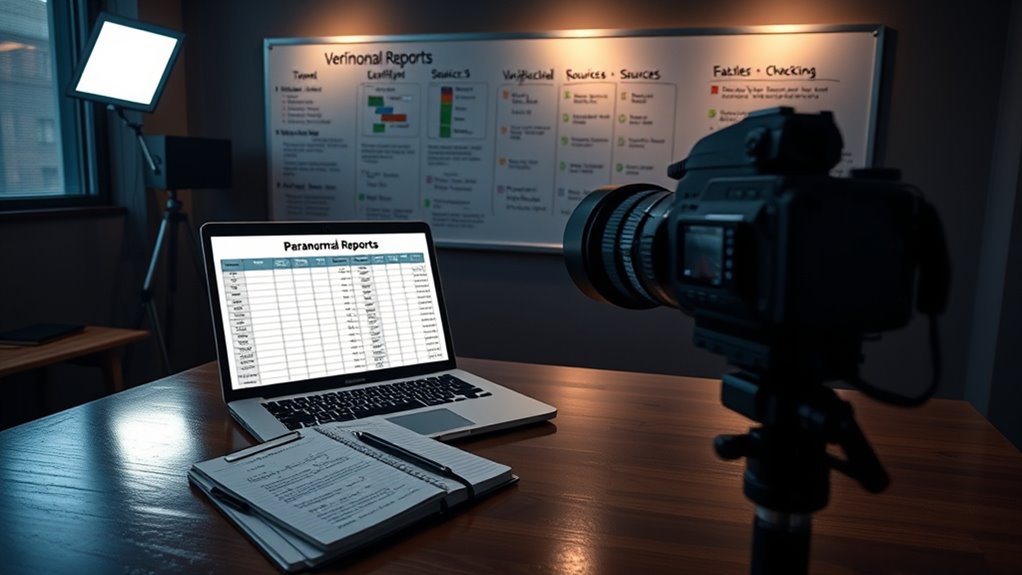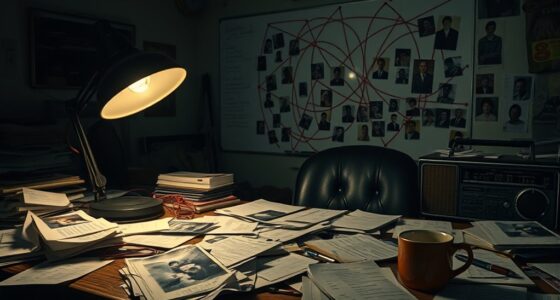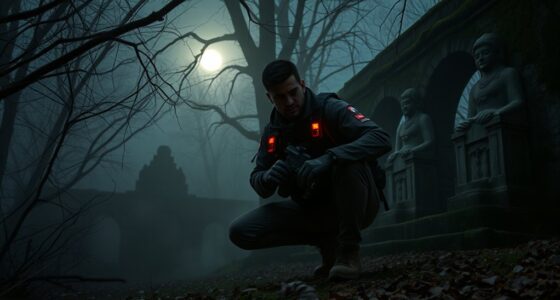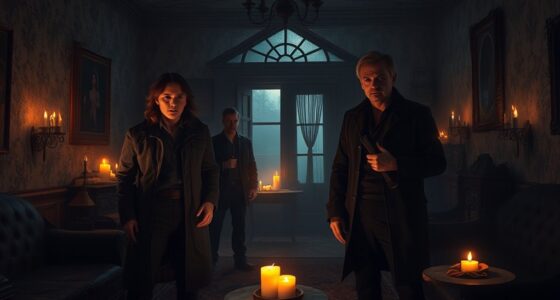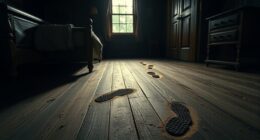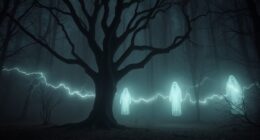Our editorial standards for paranormal reporting focus on verifying evidence, appraising source credibility, and ensuring factual accuracy. You will evaluate tangible proof like photos or videos and cross-check details with experts or multiple sources. We avoid relying on anecdotal claims alone and prioritize verifiable data over sensationalism. By maintaining these rigorous standards, we build trust and produce well-founded stories. If you continue exploring, you’ll discover how we uphold honesty in every story we share.
Key Takeaways
- We rigorously verify all evidence, including photos, videos, and artifacts, to ensure authenticity before publication.
- We critically assess source credibility by examining motives, background, and consistency through targeted questioning.
- We prioritize independently corroborated information from multiple reliable sources to build trust and accuracy.
- We avoid sensationalism by focusing on verifiable facts and scientific analysis, not anecdotal or unsubstantiated claims.
- We uphold journalistic integrity by cross-checking details, consulting experts, and adhering to strict evidence verification standards.
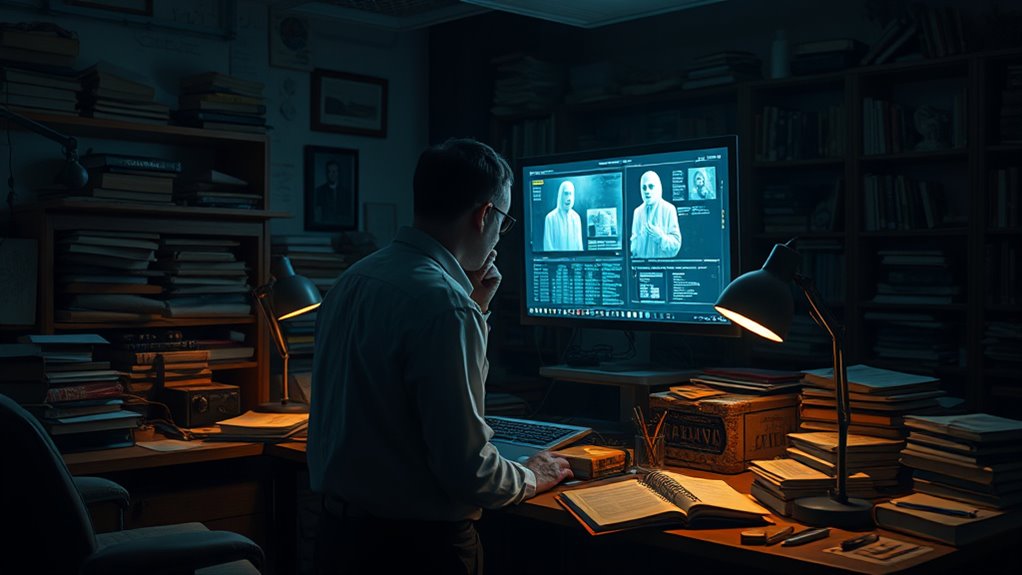
In the world of paranormal reporting, maintaining high editorial standards is essential to distinguish credible stories from sensationalism. Your goal is to provide readers with trustworthy information, which depends heavily on rigorous evidence verification and evaluating source credibility. When you receive a report or witness testimony, your first step is to scrutinize the evidence thoroughly. This means looking for tangible proof—photographs, videos, or physical artifacts—that can be independently examined. You avoid jumping to conclusions based solely on anecdotal accounts, instead prioritizing verifiable data that can withstand scrutiny. Evidence verification isn’t just about accepting claims at face value; it involves cross-checking details, analyzing the context, and consulting experts when needed. You ask yourself whether the evidence holds up under logical and scientific standards, and whether it can be replicated or corroborated by others. This process helps prevent the spread of misinformation and ensures that your reporting remains credible. Additionally, understanding the importance of source credibility is crucial, as it influences the trustworthiness of the entire story.
Equally important is evaluating source credibility. When you interview witnesses or gather reports, you evaluate their motives, background, and potential biases. You consider whether the source has a history of reliable reporting or if they might have reasons to embellish or distort their story. If a witness claims to have experienced a supernatural event, you ask probing questions to gauge consistency and look for corroborative accounts from other sources. You recognize that some sources may be influenced by personal beliefs or external factors, which can color their testimony. By verifying their credentials and examining previous reports they’ve contributed, you can better determine their reliability. This diligence helps you avoid falling for hoaxes or unsubstantiated claims, thereby maintaining journalistic integrity.
You also understand that source credibility extends beyond individual witnesses. It involves evaluating the origins of the information, such as whether the story was shared through reputable channels or if it was circulated on platforms known for sensationalism. When possible, you seek independent confirmation from multiple sources, ensuring that your story isn’t based on a single, potentially biased account. This layered approach to evidence verification and source credibility creates a strong foundation for credible paranormal reporting. It demonstrates your commitment to accuracy and helps build trust with your audience, who rely on you to deliver honest, well-researched stories. Ultimately, by adhering to these standards, you ensure that your reporting contributes meaningfully to the ongoing dialogue about the paranormal, rooted in truth and critical evaluation rather than hype or speculation.
Frequently Asked Questions
How Do You Verify Paranormal Claims?
You verify paranormal claims by carefully evaluating the evidence presented, looking for consistency and credible sources. You avoid jumping to conclusions, instead focusing on thorough evidence evaluation to distinguish between fact and fiction. Myth debunking plays a key role, as you critically analyze stories to identify hoaxes or misconceptions. This method helps guarantee your reporting remains credible, accurate, and grounded in a scientific approach, even when dealing with supernatural phenomena.
What Sources Do You Prioritize for Reports?
You prioritize sources with high credibility, such as firsthand witnesses and documented evidence, to guarantee accuracy. Expert consultation is essential; you seek out qualified researchers and specialists to provide context and validate claims. By relying on credible sources and expert insights, you strengthen your reports, making your findings more trustworthy. Always verify the information from multiple sources, and approach each report with a critical eye to maintain journalistic integrity.
How Do You Handle Anonymous Tips?
Imagine a mysterious shadow flickering in the corner of a room—that’s how we treat anonymous tips. You should verify each tip thoroughly, even when sourced from anonymous sources. You handle these tips carefully, cross-checking details and seeking corroboration before considering them credible. This process guarantees your reporting remains trustworthy, even when the source chooses to stay behind the curtain, maintaining journalistic integrity while respecting confidentiality.
Are There Specific Ethical Guidelines for Witnesses?
You should always follow confidentiality protocols to protect witnesses and maintain trust. Clearly communicate how their information will be used and stored, ensuring their privacy is respected. Assess witness credibility carefully, considering their consistency and details. Avoid pressuring witnesses for more than they’re comfortable sharing. By doing so, you uphold ethical standards, fostering an environment where witnesses feel safe and respected, which ultimately enhances the integrity of your reporting.
How Do You Differentiate Between Skepticism and Bias?
While it’s tempting to see things through a lens of certainty, you differentiate skepticism from bias by practicing critical thinking. Skepticism encourages questioning and examining evidence objectively, whereas bias clouds judgment with preconceptions. To avoid confirmation bias, you actively seek alternative explanations and remain open-minded. This balanced approach helps you stay fair, ensuring your reports reflect genuine curiosity rather than preconceived notions, fostering trust and integrity in your work.
Conclusion
By following these editorial standards, you guarantee your paranormal reports are credible and compelling. For example, if you interview a witness about a haunted house, verify their story with additional sources and avoid sensationalism. This way, your readers stay intrigued yet trust your accuracy. Remember, balancing curiosity with responsibility makes your reporting both captivating and credible. Stick to these guidelines, and you’ll turn mysterious tales into trusted stories that respect both the subject and your audience.
